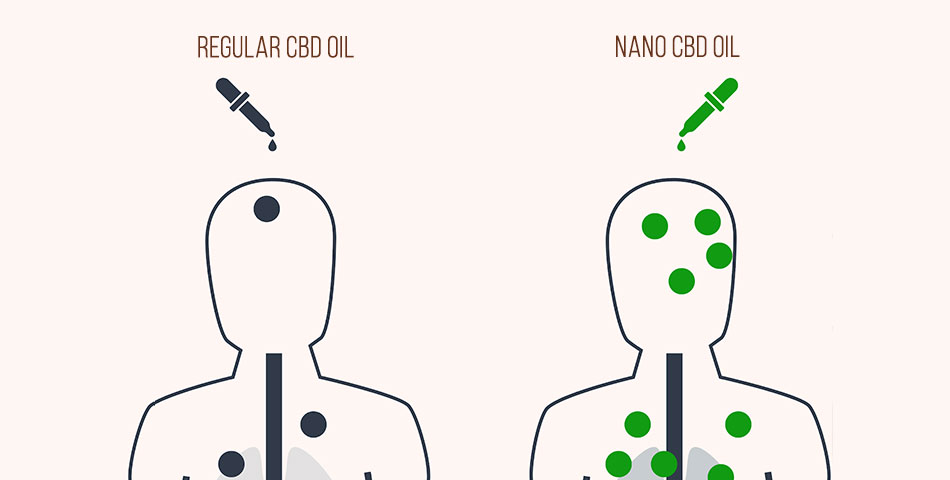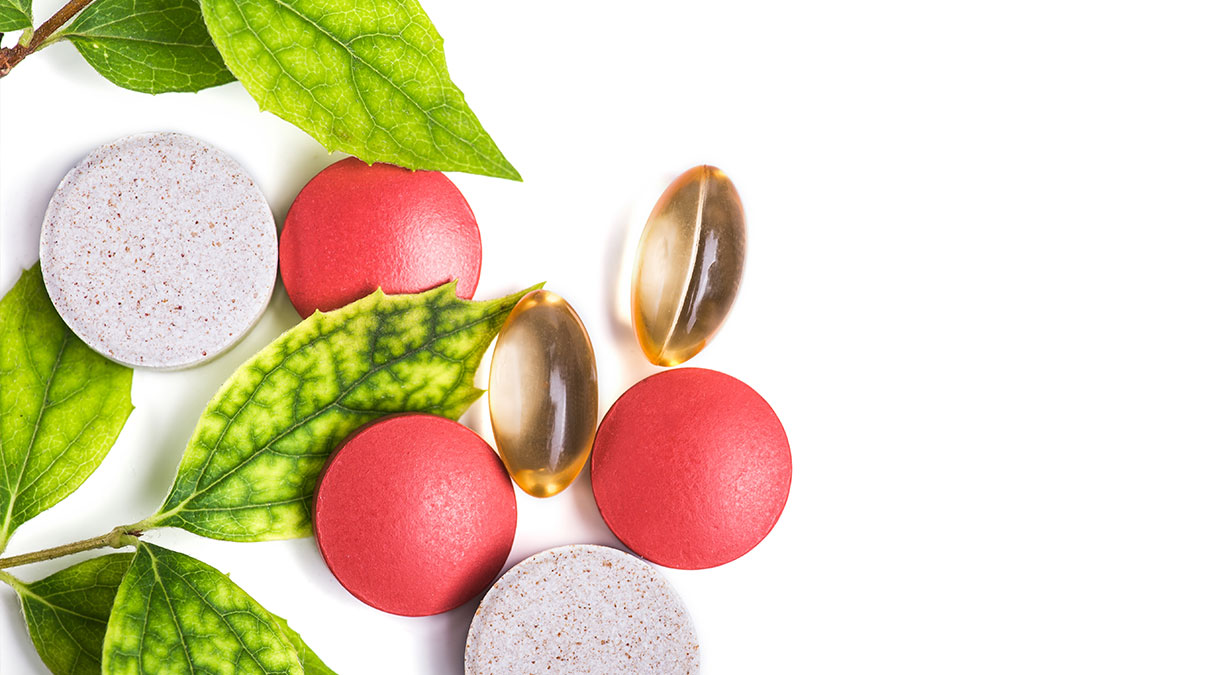Investing in your health can feel risky. While all of us want to get the most out of the supplements we choose to take, it’s easy to have doubts: What if this doesn’t work? What if it’s not the right product for me? What if my body doesn’t absorb it?
Investing in a CBD product is no different. While the body of research backing CBD has become enormous, wanting to truly optimize its effectiveness is only natural.
And the way that’s done is through something called bioavailability. CBD’s bioavailability describes how well it’s actually absorbed by your body. There’s a lot to this topic, so we’ll be covering a number of related concepts in this article. Take a look;
What Does “Bioavailability” Mean?
Bioavailability is one of those terms that evolved from two words to one word over time. The progression went something like this:
Biological availability >> Biological-availability >> Bio-availability >> Bioavailability
So, what does bioavailability actually mean? It’s simple. The term just refers to how available, i.e, usable, a substance is to your biology.
Bioavailability is an important concept for researchers, scientists, and anyone in the medical field because it has huge implications for the way a substance is dosed. If a substance is very bioavailable, a person will tend to need less of it; if it’s not very bioavailable, a person will tend to need more. Making things more nuanced, some substances are very powerful but not very bioavailable; others are weak but very easily absorbed!
CBD falls into the first category. It’s a powerful compound that has truly powerful effects in vivo—when it’s being studied in the lab—but real life can be a different story. Conventional CBD products have a low bioavailability that can make it difficult to actually experience CBD’s benefits.
Bioavailability = units of substance absorbed into bloodstream / units of substance taken
= 1 milligram / 10 milligrams
= 10%
This hypothetical example isn’t far from the truth. Research has shown that CBD’s real-world bioavailability is indeed pretty low, generally hovering in the 10%-20% range. CBD’s bioavailability is also affected by how you take it, how much you take, and many other factors. Some delivery methods have higher bioavailability than others. CBD oil’s bioavailability is usually 13%-19%.
Can You Increase CBD’s Bioavailability?
13%-19% isn’t much. It means less than a fifth of the CBD oil you take is actually doing anything! The other four-fifths? Your body bypasses them entirely.
Thankfully, though, CBD’s bioavailability can be increased. Both scientific research and anecdotal reports are clear that CBD works more efficiently in some circumstances than others. As we mentioned earlier, one’s delivery method matters: taking CBD via an oil or tincture makes the compound more bioavailable than taking it via an edible. And the longer one holds the CBD oil under their tongue, the higher its absorption tends to get . . . . . . but only to a point. To really maximize your CBD’s bioavailability, a more proactive approach might be needed.
How to Increase CBD’s Bioavailability
One proactive step you can take to boost your CBD oil’s bioavailability? Eat a balanced diet rich in essential fats like omega-3. Bonuses for those who take steps to minimize the high omega-6 intake most of us in the western world get.
The omega 3:6 ratio in a person’s diet directly impacts many things, including the amount of inflammation one experiences and one’s hormonal health. Research is clear that this ratio also impacts the health of a person’s endocannabinoid system. That’s because endocannabinoids are made from these fatty acid precursors. Translation: if you want your CBD oil to work better, eat some wild salmon every now and then.
Healthy fats also have a more direct impact on CBD absorption, which is why we use premium MCT oil as the base for all our CBD oils. A recent study found that eating CBD with a fatty meal boosted its strength by a factor of four, with peak absorption into the bloodstream up to 14 times higher. If you want to get the most out of your CBD oil (and maybe save some money in the process), consider taking it with an especially rich meal. Or, perhaps, an especially decadent cup of CBD-infused coffee.
“Increases in the amount of the CBD dose being absorbed into the body [can] lead to lower medication costs,” confirms Ilo Leppik, the study’s co-author. Other dietary techniques may boost bioavailability, too. In fact, we have a whole article about them if you’re interested.
Another way to boost CBD’s bioavailability has to do with the CBD itself. CBD molecules normally structure themselves in large, clumsy groups that don’t mix well with water—or the human body. But recent advances in CBD science have found a way to wrap CBD into specialized liposomes that make CBD oil dissolvable in water.
This new form of CBD oil is called nano-enhanced CBD, and because of its efficacy, it’s what Green Maiden uses in all our CBD products. Nano CBD kicks in faster and stronger than ‘conventional’ CBD, too. For more info about nano CBD, check out this article:
Nano CBD Oil: What It Is, What It Does, and the Future
CBD Sublingual Bioavailability
Sublingual CBD can mean any CBD product designed to be taken under the tongue, though CBD oils and tinctures are the most common sublingual products.
These products often exceed the 13%-19% bioavailability we mentioned earlier, if only by a little bit, and a premium CBD oil taken sublingually may be up to 30% compatible with one’s body. That’s because sublinguals get around the “first-pass” liver metabolism that would otherwise break CBD down before it’s processed.
In fact, the longer you hold a CBD oil under your tongue, the faster it’ll kick in—and the more it’ll be absorbed. It’s telling that the cannabis industry’s pharmaceutical side develops more oromucosal (i.e, sublingual) products than anything else. They’ve done enough research to know that this delivery method really works.
CBD Vaporized Bioavailability
Well . . . tinctures taken sublingually are more bioavailable than almost anything else. The one exception? Vaporized CBD. When CBD is vaped, its cannabinoids can absorb directly through the lungs and into the bloodstream. While not all of the CBD makes it through, up to 60% of it does.
Vaping comes with some potential downsides, though. For one, it’s not quantized—it’s hard to tell whether that puff of vape oil you just took contained 2 or 3 or 5 milligrams of CBD. Many vape oils also contain additives that, while they may seem harmless at first, actually morph into harmful oxidants and benzenes once heated. Long story short: taking CBD via oil or tincture remains a more natural, risk-free way, even if it’s slightly less bioavailable.
CBD Intranasal Bioavailability
You probably haven’t tried taking CBD intranasally yet. But this delivery method is surprisingly effective. It basically takes the concepts from sublingual use a couple steps further, by targeting the thin mucosal membranes of the nose. Intranasal CBD kicks in fast and is very well absorbed.
A comprehensive scientific review confirmed that intranasal cannabis “can be transferred quickly across the single epithelial cell layer directly into the systemic blood circulation and avoid first-pass hepatic and intestinal metabolism . . . producing a fast effect.” The study’s authors went on to describe intranasal delivery as a better option than even IV injection.
But let’s face the facts here: who wants to shoot CBD into their nose? Probably not very many people. The best delivery method in the world is no good if it’s not bearable enough to be used consistently, which brings us to some simpler ways to improve your CBD’s bioavailability . . .
The Simple Factor that Affects CBD’s Bioavailability

- CBD oil, held under the tongue? Check.
- Nano-enhanced CBD product? Check.
- Healthy omega-3-rich diet? Check.
- Oh, and a high fat meal? Check.
If you’ve done all the above in your quest to get the most out of CBD, congrats . . . you’re most of the way there! But there’s one more important factor you should know about, and it relates back to your endocannabinoid system’s sensitivity. Substances and activities that make this system more sensitive help CBD work better; things that make this system less sensitive, on the other hand, lower CBD’s bioavailability.
If one’s endocannabinoid receptors are fully expressed and fully ‘opened up,’ then CBD’s bioavailability gets boosted. One way this level of sensitivity can be reached is by taking as many of hemp’s naturally-occurring compounds—trace cannabinoids, terpenes, flavonoids, and many more—as you can alongside your CBD. Research shows that certain terpenes actually change the shape of your body’s dedicated CBD receptors (CB2 receptors are their official name). And when many terpenes are taken together, the benefits synergize so much they’re hard to fully measure.
Full spectrum CBD products make engaging this special ‘entourage effect’ possible. And nano-enhanced full spectrum products probably present the best option of all because they maximize CBD’s delivery to its receptors . . . and also maximize the biochemical changes that happen once CBD gets there.
Frequently Asked Questions
The following section may overlap a little with previous content, but don’t worry—these FAQ’s are simply meant to provide easy access to particular questions
What is CBD’s bioavailability?
CBD’s bioavailability varies depending on how it’s taken. On the low end, it’s around 6 percent, which is the bioavailability of CBD edibles. On the high end, CBD’s bioavailability can get up to 60%, as seen with vaporization. And the bioavailability of newer nano-enhanced CBD products is in the 55-60% range, though some research suggests it may even reach up to 90%! More research is still needed on nano CBD . . . but what we have so far is quite promising.
What increases the bioavailability of CBD?
Liposomal encapsulation (i.e, nanotechnology), holding your CBD oil sublingually for longer, and taking your CBD with a fatty meal, to name just a few things! Terpenes, flavonoids, and other hemp compounds may further increase CBD’s absorption
How can I make my CBD work better?
Besides taking the right CBD product the right way? Dietary and lifestyle factors. Eating a nutrient-rich diet high in omega 3 fatty acids is likely the best ‘biohack’ when it comes to helping CBD work better. For a complete list of things to try, click here
Which method of CBD delivery has the highest bioavailability?
CBD IV injections or CBD delivered intranasally may have the highest bioavailability, though these aren’t our first choices, if only for practicality’s sake. Vaporized CBD is also very bioavailable, though vaping isn’t our first choice, either, due to possible side effects. Taking CBD sublingually presents the best of both worlds without the potential downsides of other methods.
What is the bioavailability of CBD oil taken sublingually
CBD oil’s bioavailability is between 20% and 30% when taken sublingually. If you use a premium full-spectrum CBD oil, hold the oil under your tongue for longer, or take advantage of known absorption boosting substances like terpenes or ethanol, you might just hit 30%! And if you use a nano-enhanced CBD oil such as Green Maiden produces . . . things can be taken to an entirely new level. Nano CBD oil’s bioavailability is likely at least 55% and may be as high as 90%.
To Your Health
Green Maiden




